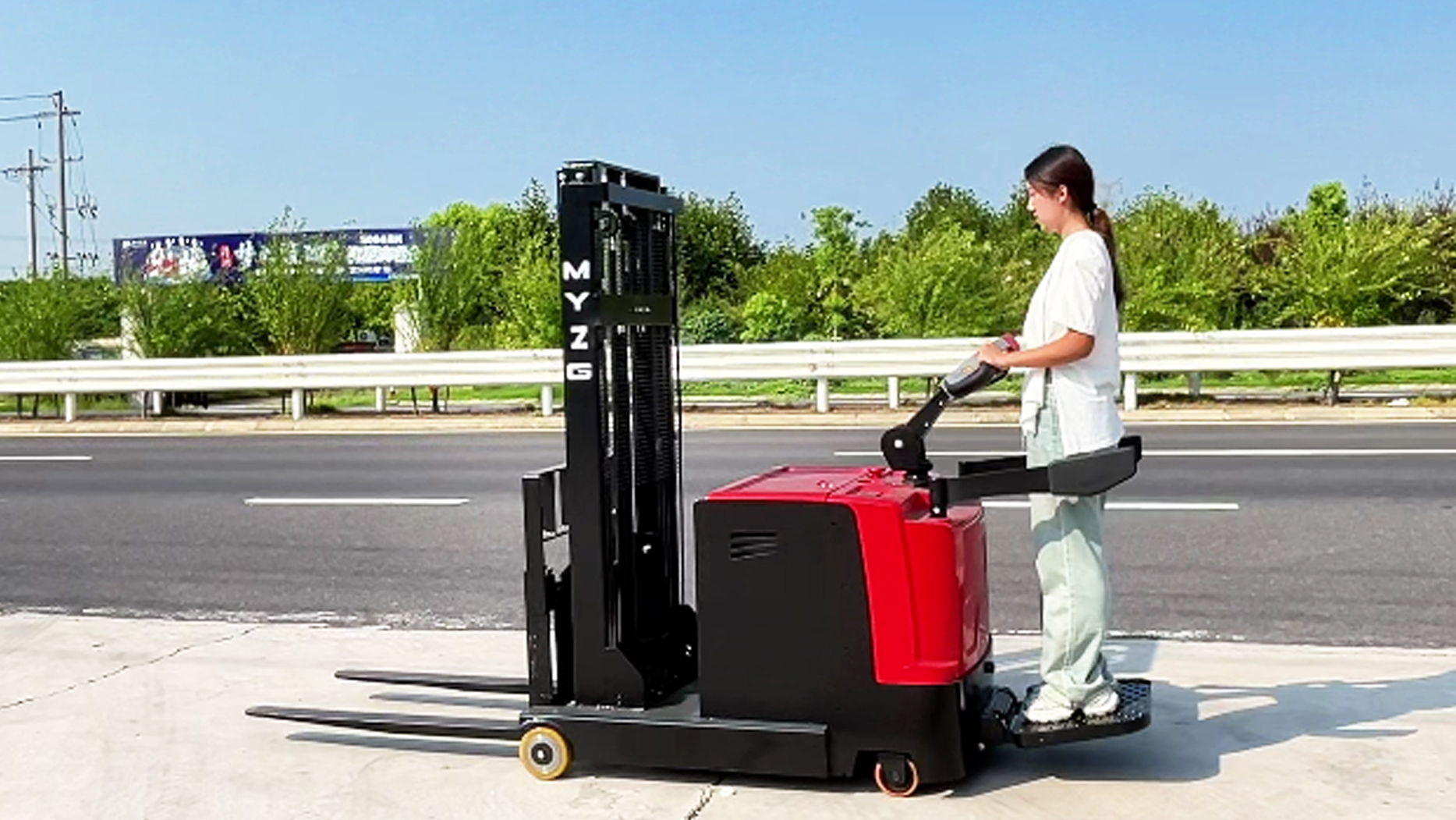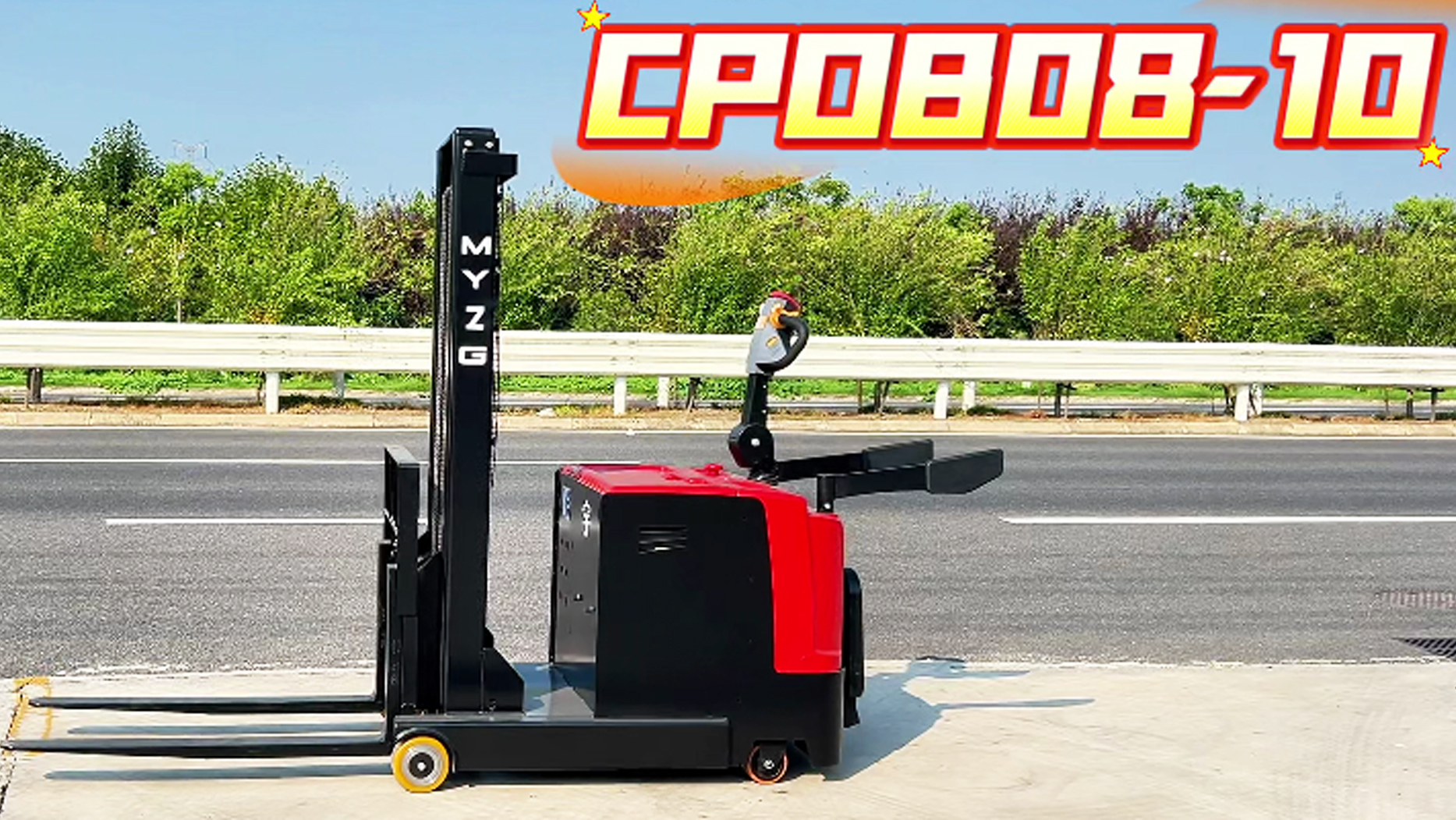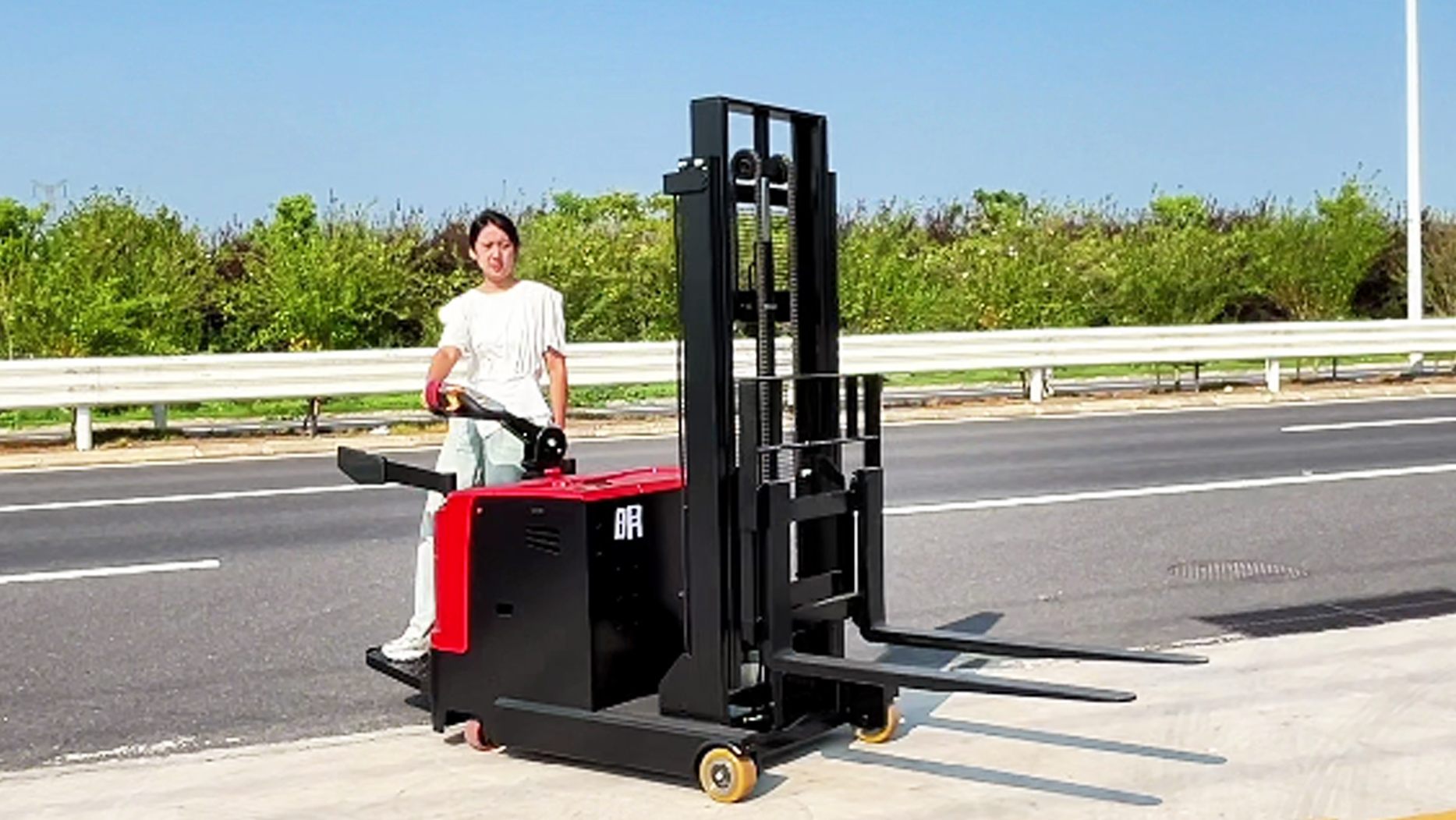I. Introduction
Electric stackers are material handling machines used to lift and transport palletized loads. Their primary function is to efficiently stack goods vertically in warehouses and storage facilities, maximizing space utilization. The material handling industry has seen a notable shift towards electric stackers in recent years. This increased popularity is driven by factors such as growing environmental concerns, the need for greater operational efficiency, and advancements in battery technology. This article explores the various ways companies choose to utilize electric stackers, examining the advantages, influencing factors, applications, and strategic considerations involved in their implementation.
II. Advantages of Electric Stackers
Electric stackers offer several advantages over traditional internal combustion (IC) engine-powered forklifts, making them an attractive choice for many businesses:
Environmental benefits:
Zero emissions: Electric stackers produce no exhaust fumes, making them ideal for indoor use and contributing to a cleaner, healthier work environment.
Reduced noise pollution: Electric motors operate much more quietly than IC engines, minimizing noise disruption in the workplace and improving communication among workers.
Operational efficiency:
Maneuverability in tight spaces: Electric stackers are designed with a compact footprint and excellent maneuverability, allowing them to navigate narrow aisles and confined areas with ease.
Lower operating costs: Electricity is generally cheaper than fuel, resulting in lower energy costs. Additionally, electric stackers have fewer moving parts, reducing maintenance requirements and associated expenses.
Reduced maintenance requirements: Electric stackers require less maintenance than IC forklifts, eliminating the need for regular oil changes, filter replacements, and other engine-related servicing.
Ergonomics and operator comfort:
User-friendly controls: Electric stackers typically feature intuitive controls that are easy to learn and operate, reducing operator fatigue.
Comfortable operation for extended periods: The smooth and quiet operation of electric stackers, combined with ergonomic design, enhances operator comfort during long work shifts.
III. Factors Influencing the Choice of Electric Stackers
Companies consider several key factors when deciding to incorporate electric stackers into their operations:
Warehouse size and layout:
Aisle width and turning radius requirements: The narrow aisle widths common in many warehouses necessitate the use of stackers with tight turning radii.
Maximizing vertical storage space: Electric stackers enable companies to fully utilize the vertical space in their facilities, increasing storage capacity.
Lifting height and capacity:
Matching stacker capabilities to storage needs: Companies select stackers with appropriate lifting heights and load capacities to handle their specific storage requirements.
Handling various pallet types and load weights: Electric stackers are available in various configurations to accommodate different pallet sizes and load weights.
Floor conditions and gradients:
Ensuring stacker stability and traction: The stability and traction of the truck stack are crucial for safe and efficient operation, especially on uneven floors.
Navigating ramps and uneven surfaces: Some electric stackers are designed to handle ramps and uneven surfaces, providing greater versatility.
Operating environment:
Temperature considerations: In cold storage facilities, electric stackers with specialized batteries and components are necessary.
Air quality and ventilation requirements: Electric stackers are preferred in environments where air quality is a concern, such as food processing and pharmaceuticals.
IV. Types of Electric Stackers and Their Applications
Electric stackers come in various types, each suited to specific applications:
Pedestrian stackers:
Short-distance, low-level lifting: Pedestrian stackers are designed for moving pallets over short distances and lifting them to low heights.
Ideal for small warehouses and retail spaces: These stackers are commonly used in small warehouses, retail stores, and other confined spaces.
Ride-on stackers:
Increased travel speed and lifting height: Ride-on stackers allow the operator to stand on the machine, increasing travel speed and enabling higher lifting.
Suitable for medium to large warehouses: These stackers are well-suited for medium to large-sized warehouses with longer travel distances.
Reach stackers:
Extendable forks for accessing deep racks: Reach stackers have extendable forks that can reach into deep racking systems, maximizing storage density.
Optimizing high-density storage: They are ideal for warehouses that utilize high-density storage solutions, such as double-deep racking.
Counterbalance stackers:
Similar to forklift, but more compact: Counterbalance stackers have a counterweight that offsets the load, similar to a forklift, but they are generally more compact and maneuverable.
Versatile for various warehouse tasks: These stackers can handle a variety of warehouse tasks, including loading, unloading, and stacking.
V. Integrating Electric Stackers into Warehouse Operations
Integrating electric stackers into warehouse operations requires careful planning and consideration:
Workflow optimization:
Improving pallet movement and retrieval: Electric stackers can significantly improve the efficiency of pallet movement, reducing the time it takes to move goods.
Reducing handling time and labor costs: By enabling faster and more efficient handling, electric stackers can help reduce labor costs.
Storage system compatibility:
Matching stacker dimensions to racking systems: It is essential to ensure that the dimensions of the electric stackers are compatible with the existing racking systems.
Narrow aisle racking and very narrow aisle (VNA) configurations: Electric stackers are often used in conjunction with narrow aisle and very narrow aisle racking systems to maximize space utilization.
Safety considerations:
Operator training and certification: Proper training and certification are crucial for ensuring the safe operation of electric stackers.
Implementing safety protocols and guidelines: Companies should implement clear safety protocols and guidelines to prevent accidents and injuries.
Battery management:
Charging infrastructure and procedures: Adequate charging infrastructure and efficient charging procedures are necessary to keep electric pallet truck stacker operational.
Battery types and maintenance: Different battery types (e.g., lead-acid, lithium-ion) have different maintenance requirements and charging characteristics.
VI. Cost Analysis and ROI
When evaluating the use of electric stackers, companies conduct a thorough cost analysis and calculate the return on investment (ROI):
Initial investment:
Comparing purchase prices of different stacker types: The purchase price of electric stackers varies depending on the type, lifting capacity, and features.
Considering additional costs: Additional costs may include charging infrastructure, battery replacements, and initial training.
Operating costs:
Electricity consumption vs. fuel costs: Electric stackers typically have lower energy costs compared to fuel-powered equipment.
Maintenance and repair expenses: Electric stackers generally have lower maintenance and repair costs due to fewer moving parts.
Return on investment (ROI):
Calculating savings from increased efficiency and reduced costs: ROI is calculated by comparing the savings from increased efficiency and reduced operating costs to the initial investment.
Assessing the long-term economic benefits: Companies assess the long-term economic benefits of using electric stackers, including increased productivity, reduced downtime, and lower overall operating costs.
VII. Case Studies: Successful Implementation of Electric Stackers
Many companies have successfully integrated electric stackers into their operations, achieving significant benefits. For example:
A large distribution center implemented a fleet of reach stackers, which allowed them to increase storage density by 40% and reduce order fulfillment times by 20%.
A food processing company switched to electric stackers to improve air quality in their facility, resulting in a healthier work environment and reduced product contamination.
A retail chain used electric pedestrian stackers in their backrooms to improve the efficiency of restocking shelves, leading to faster turnaround times and reduced labor costs.
These case studies demonstrate the diverse benefits that electric stackers can offer, including increased throughput, reduced damage, and improved safety.
VIII. Future Trends in Electric Stacker Technology
The technology of electric stackers continues to evolve, with several key trends shaping their future:
*Advances in battery technology: Lithium-ion batteries are becoming increasingly common, offering faster charging times, longer run times, and reduced maintenance compared to traditional lead-acid batteries.
*Automation and AGV integration: Automated guided vehicles (AGVs) and autonomous stackers are emerging, further streamlining warehouse operations and reducing labor costs.
*Data analytics and fleet management systems: Telematics and data analytics provide valuable insights into stacker usage, allowing companies to optimize fleet management, improve maintenance scheduling, and enhance overall efficiency.
IX. Choosing the Right Electric Stacker for Your Business
To choose the right electric stacker, companies should consider the following questions:
What are the specific lifting height and load capacity requirements?
What is the warehouse size, layout, and aisle width?
What are the floor conditions and operating environment?
What is the budget and expected return on investment?
What is the supplier's reputation and the level of after-sales support?
By carefully evaluating their needs and considering these questions, businesses can select the electric stacker that best aligns with their operational requirements.
X. Conclusion
Electric stackers play a vital role in modern warehousing and material handling, offering numerous advantages in terms of efficiency, safety, and environmental friendliness. By carefully considering their specific needs and choosing the right stacker type, companies can optimize their warehouse operations, reduce costs, and improve overall productivity.
Post time:Apr.07.2025



